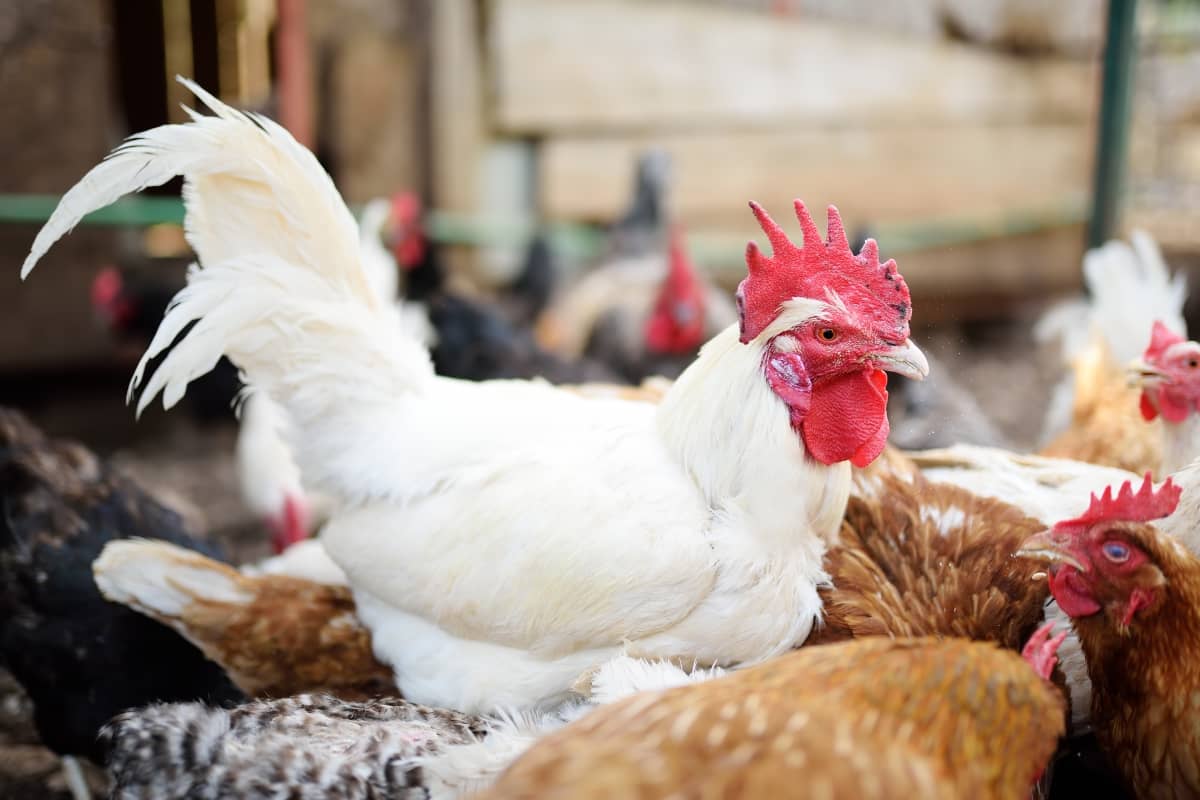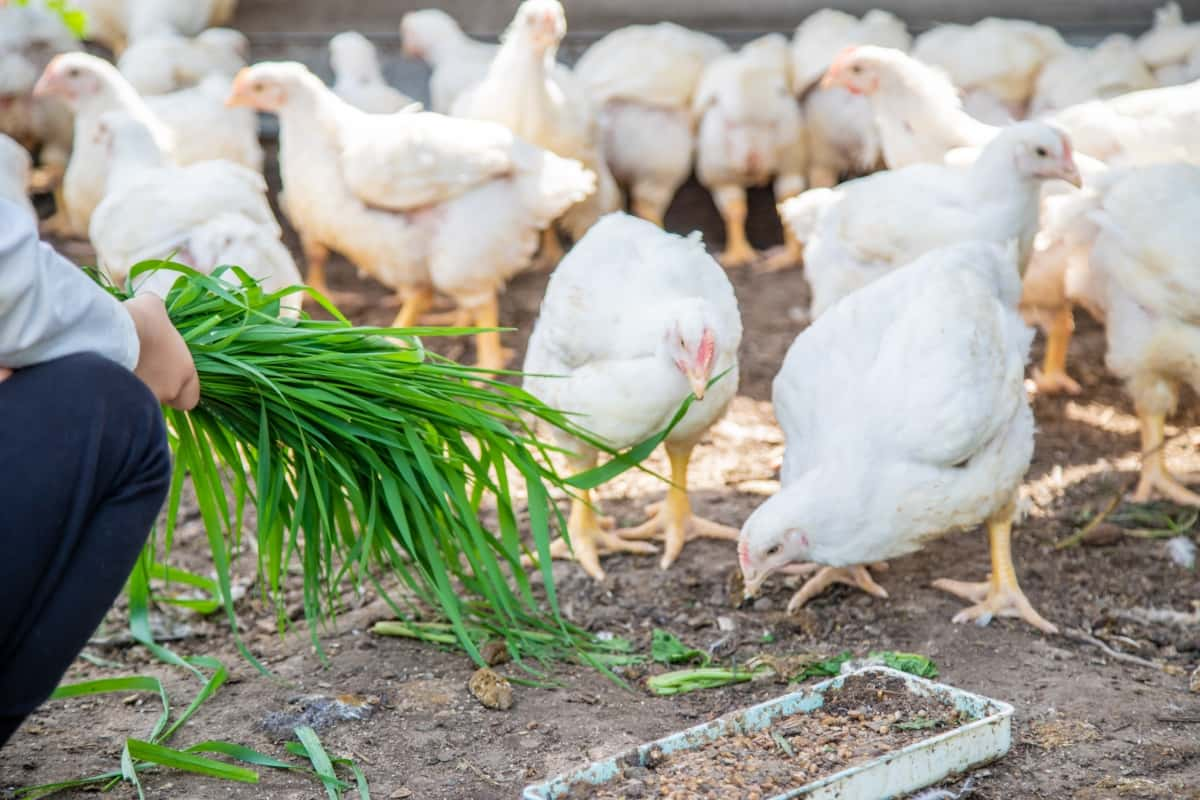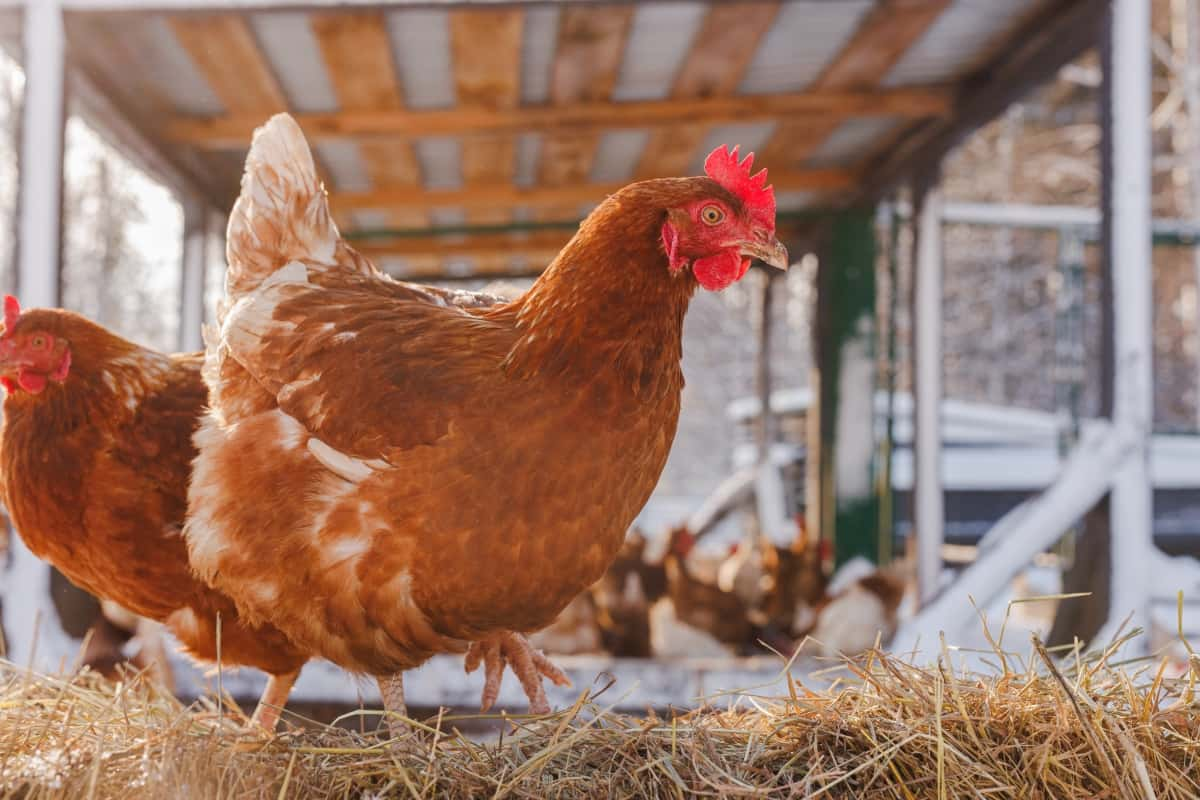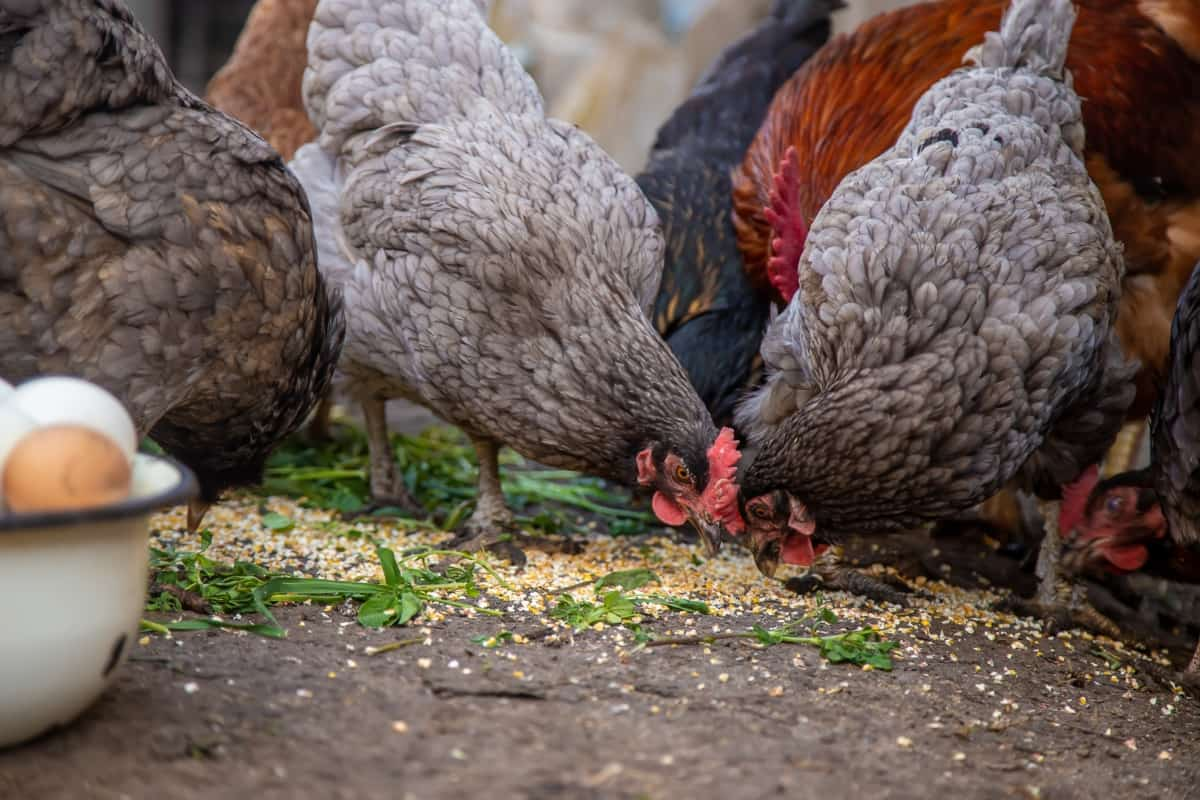Calcium is crucial for chickens’ overall health and productivity. It is vital for various physiological functions, including muscle contraction, nerve transmission, and blood clotting. Additionally, calcium is essential for the formation of strong bones and eggshells, ensuring the well-being of both laying hens and broilers. A deficiency in calcium can lead to skeletal abnormalities, reduced egg production, and poor eggshell quality, ultimately impacting the profitability of poultry operations.
Role of Calcium for Eggshell Quality and Skeletal Development
Calcium is particularly critical for eggshell formation and skeletal development in chickens. In egg production, hens require a sufficient supply of calcium to produce eggs with durable shells. Without an adequate calcium intake, eggshells may become thin, brittle, or deformed, leading to increased breakage and decreased hatchability.

Causes of Calcium Deficiency in Chickens
Dietary Imbalances Lead to Insufficient Calcium Intake
Inadequate levels of calcium in feed formulations or improper ratios of calcium to phosphorus can hinder chickens’ ability to meet their calcium requirements. Factors such as poor feed quality, limited access to calcium-rich supplements, or incorrect feeding practices can contribute to insufficient calcium intake among poultry flocks, leading to health issues and decreased productivity.
Environmental Factors Affecting Calcium Absorption in Poultry and Utilization
Factors such as temperature extremes, high humidity levels, or stressful conditions can affect chickens’ ability to absorb and metabolize calcium effectively. Additionally, environmental contaminants or toxins present in water sources or feed can interfere with calcium absorption in the gastrointestinal tract. Providing a conducive environment with proper ventilation, temperature control, and access to clean water can help optimize calcium absorption and utilization in poultry, preventing calcium deficiency in chickens.
Symptoms and Effects of Calcium Deficiency
Recognizing Signs of Calcium Deficiency in Chickens
Identifying chicken calcium deficiency symptoms involves observing specific signs such as reduced eggshell quality, brittle feathers, lethargy, lameness, or deformities in young birds. Additionally, affected hens may exhibit decreased egg production or lay soft-shelled or shell-less eggs, indicating a potential lack of calcium in their diet.
Impact on Eggshell Quality, Bone Strength, and Overall Health
Calcium deficiency can have profound effects on chickens’ eggshell quality, bone strength, and overall health. Insufficient calcium intake leads to thin, weak eggshells, increasing the risk of breakage and reduced hatchability. Furthermore, weakened skeletal structure due to calcium deficiency can result in leg deformities, fractures, or lameness, compromising the bird’s mobility and well-being.
Calcium Deficiency in Laying Hens
Increased Calcium Demand During Egg Production: Laying Hen Calcium Requirements
Laying hens experience a heightened demand for calcium during egg production. As they lay eggs, hens must replenish the calcium depleted from their bodies to form the eggshells. This increased demand necessitates a consistent and sufficient supply of calcium in their diet to support optimal eggshell formation. Failure to meet this demand results in calcium deficiency, negatively impacting eggshell quality, reproductive performance, and overall hen health.
Risks of Hypocalcemia (Low Blood Calcium Levels) in Laying Hens
Hypocalcemia in chickens poses significant risks to laying hens, potentially leading to various health complications. Low blood calcium levels can result in weakened eggshells, increasing the likelihood of egg breakage during laying or subsequent handling. Furthermore, hypocalcemia can lead to chicken skeletal health issues such as osteoporosis, causing brittle bones and increased susceptibility to fractures in laying hens. Additionally, this condition may manifest as muscle weakness, impaired mobility, and even reproductive problems, ultimately affecting the productivity and welfare of the flock.
In case you missed it: Lavender Orpington Chickens: All You Need to Know

Preventing Calcium Deficiency through Proper Nutrition
Balancing Calcium Levels in Chicken Feed
Formulating feeds with the correct calcium-to-phosphorus ratio ensures optimal absorption and utilization of calcium. Additionally, adjusting calcium levels based on the stage of production—such as increasing calcium content for laying hens—helps meet their specific needs. Regular testing of feed ingredients and consulting with poultry nutritionists can aid in maintaining balanced diets that support optimal calcium intake for chickens.
Incorporating Calcium-Rich Supplements and Sources Into the Diet
Supplementing chicken calcium supplements is crucial for preventing deficiencies. Including ingredients like limestone, oyster shells, or ground eggshells provides supplemental calcium to meet birds’ requirements. Providing chicken calcium supplements sources rich in calcium, such as alfalfa or green leafy vegetables, diversifies the diet and ensures adequate calcium intake for poultry, promoting strong eggshells, robust skeletal development, and overall well-being.
Calcium-Rich Foods for Chickens
Natural Sources of Calcium for Chickens, Such as Oyster Shells, Limestone, and Eggshells
Oyster shell for chickens, a common supplement, provides readily available calcium carbonate, supporting eggshell formation and skeletal health. Limestone, another valuable source, offers calcium in the form of calcium carbonate, aiding in maintaining proper calcium levels in poultry diets. Recycling crushed eggshells back into feed supplies a convenient, sustainable source of calcium while reducing waste.
Feeding Strategies to Ensure Adequate Calcium Consumption
Providing free-choice access to calcium supplements, such as oyster shells or crushed limestone, allows birds to regulate their intake based on individual needs. Additionally, offering separate feeders for calcium supplements encourages consumption, especially for laying hens requiring higher calcium levels during egg production. Incorporating calcium-rich treats, such as greens or mealworms, into the diet provides additional sources of calcium while offering variety.
Managing Calcium Absorption and Utilization
Factors Affecting Calcium Absorption in Chickens’ Digestive Systems
Optimal pH levels are critical for calcium solubility and absorption in the gut. Factors such as gut health, the presence of anti-nutritional factors, and interactions with other minerals like phosphorus can affect absorption rates. Vitamin D3 plays is crucial for calcium absorption by facilitating its uptake in the intestines. Additionally, age, breed, and hormonal fluctuations can impact calcium utilization efficiency in chickens.
Enhancing Calcium Utilization Through Proper Feed Formulation and Management
Ensuring a balanced calcium-to-phosphorus ratio in feed formulations optimizes the absorption and utilization of both minerals. Incorporating organic sources of calcium, such as oyster shells or limestone, enhances bioavailability and supports skeletal development and eggshell quality. Utilizing feed additives like phytase can improve phosphorus utilization, reducing the risk of mineral imbalances by managing calcium in chicken diets.
Environmental Factors Affecting Chickens Calcium Availability
Impact of Environmental Conditions on Calcium Absorption and Metabolism
Temperature extremes, high humidity levels, and stressors can disrupt calcium absorption and metabolism in poultry. Heat stress, for instance, alters birds’ physiology, affecting their ability to absorb and utilize calcium effectively. Additionally, poor ventilation and air quality can exacerbate these effects, leading to decreased calcium intake and retention.
Adjusting Management Practices to Optimize Calcium Uptake
Providing adequate shade, ventilation, and cooling systems helps mitigate heat stress, supporting normal calcium metabolism. Ensuring clean, uncontaminated water sources and proper sanitation practices minimize the risk of bacterial infections that can interfere with calcium absorption.
In case you missed it: Raising Norfolk Grey Chickens: A Complete Guide to Care, Breeding, and Benefits

Additionally, implementing feeding strategies that account for seasonal variations in calcium requirements and offering supplemental sources of calcium during periods of increased demand can help maintain optimal levels in the flock.
Health Implications of Calcium Deficiency
Long-Term Consequences of Untreated Calcium Deficiency in Chickens
Chronic deficiencies can result in stunted growth, reduced chicken bone strength, and skeletal deformities, compromising the birds’ mobility and welfare. Furthermore, prolonged calcium deficiency negatively impacts egg production, quality, and hatchability, diminishing the profitability of poultry operations.
Risks of Skeletal Disorders, Eggshell Abnormalities, and Reproductive Issues
Skeletal disorders such as osteoporosis, leg weakness, and fractures are common consequences, impairing mobility and causing pain. Eggshell abnormalities, including thin, soft, or malformed shells, increase the likelihood of egg breakage and reduce hatchability. Reproductive issues such as decreased fertility and egg production further impact the profitability of poultry operations.
In case you missed it: Wyandotte Chicken Egg Production: A Comprehensive Guide

Conclusion
Addressing calcium deficiency in chickens is paramount to maintaining their health and productivity. By implementing proper nutrition strategies, including balanced feed formulations and supplementation, and optimizing management practices, poultry producers can effectively prevent calcium deficiencies. Prioritizing calcium management ensures stronger, healthier birds and maximizes the profitability of poultry operations.
- Feed Your Flock for Less: Top 10 Tips to Save on Chicken Feed
- Ultimate Guide to Ossabaw Island Hog: Breeding, Raising, Diet, and Care
- Hatching Answers: The Top 10 Reasons Your Chickens Aren’t Laying Eggs
- Eggs and Economics: Breaking Down the Cost of Raising Backyard Chickens
- Defend Your Greens: Proven Methods to Keep Iguanas Out of Your Garden
- Ultimate Guide to Cinnamon Queen Chicken: A Comprehensive Guide for Beginners
- Ultimate Guide to California Tan Chicken: Breeding, Raising, Diet, Egg-Production and Care
- Ultimate Guide to Marsh Daisy Chicken: Breeding, Raising, Diet, and Care
- 10 Types of Chicken Farming Businesses You Can Start for Profits